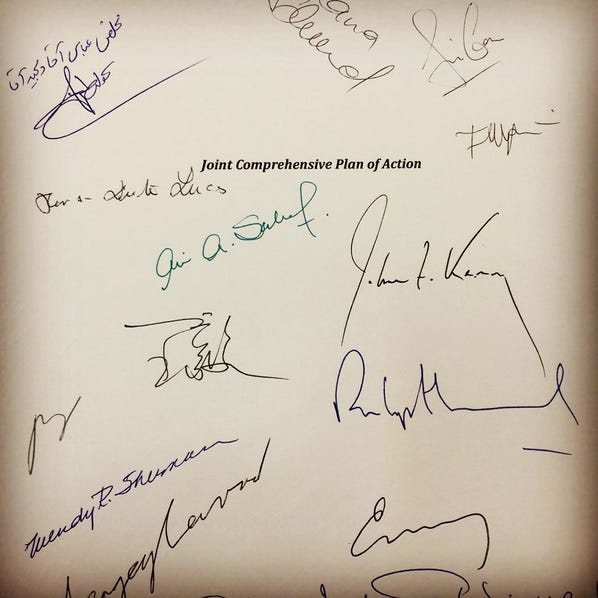Solving Complexity in Global Diplomacy: The Iran Nuclear Negotiations
Part 1 of a series to dive deep into the intricacies of the Iran nuclear negotiations

Around Christmas time last year, I journeyed into the heart of the Tunisian Sahara, trading the glittering cityscape of Singapore for an unbroken horizon of sand and stars. The Sahara, with its sublime vastness, intricate fractal patterns etched into the dunes, and a celestial theater unfolding across the night sky, had an alien allure. It was akin to stepping onto an entirely different planet.
This trip ignited a spark, drawing out interesting parallels between the undulating dunes of the Sahara and the typical dynamics of negotiation.
The Sahara holds timeless lessons shaped by the survival and resilience of its inhabitants.
Embracing complexity
Every bit of the Saharan landscape teems with a paradoxical complexity. It's a world of stark simplicity, yet a closer look reveals an intricate network of survival and resilience. The dunes are endless, all paths are erased by wind and there is no obvious way out.
Negotiation shares the same paradox. You might see it as a straightforward transaction, a give and take if you will - but beneath the surface, it's a delicate dance of shifting perspectives and evolving interests. Similar to the Saharan landscape, negotiations are dynamic, alive and usually have no obvious way out. What you think you might want out of a negotiation today, might change tomorrow if you see what the counter-party is offering and vice-versa.
Embracing this complexity gets you into a robust mindset that allows for a dynamic exchange and creation of value. In any negotiation, complexity can be your ally or your enemy. Embrace it and you will have a better chance to get to a desirable outcome.
In the following paragraphs, I want to take the example of the Iran nuclear negotiations (Outcome: JCPOA - Joint Comprehensive Plan Of Action) and dive deep into it. In the next months, I will be publishing more articles about the JCPOA negotiations as I really think that this is one of those rare golden nuggets that we can learn from as negotiators.
The Iran nuclear negotiations
Consider the long and intricate negotiations that led to the JCPOA, or the Iran nuclear deal, as a clear example of the complexity inherent in negotiations. This negotiation is probably the best example in the 21st century of how negotiations can solve tough global problems. This negotiation was not a simple transaction, but a multilateral negotiation involving Iran, the United States, and the P5+1 group, which includes Russia, China, the United Kingdom, France, and Germany, plus the European Union.
In these negotiations, each party had its own strategic interests. For instance, Iran desired the lifting of sanctions to improve its economic situation, while preserving as much of its nuclear program as possible for reasons of national pride and deterrence. The Western countries, led by the United States, sought to prevent Iran from developing nuclear weapons, ensuring regional stability and global non-proliferation. On the other hand, Russia and China, though sharing the non-proliferation goal, had other geopolitical considerations, such as their respective relationships with the United States.
The JCPOA negotiation was complex not only because of the numerous parties involved, but also because the interests of each party were shifting over time. For instance, the US stance towards the agreement changed significantly with different presidential administrations. During President Obama's tenure, the US was inclined towards the agreement, considering it a significant step towards preventing Iran's nuclear weapon development. However, under President Trump, the US withdrew from the agreement, citing concerns that it was not comprehensive enough and that it failed to address Iran's missile program and regional influence. With President Biden, the US indicated a desire to return to the agreement, albeit with potential revisions.
Moreover, the JCPOA negotiations' complexity was amplified by technical details regarding nuclear energy, verification processes, and timeline of sanctions relief. Thus, the deal was not merely a one-off transaction; it was a living, evolving agreement that was contingent on the changing circumstances, perspectives, and interests of each party involved.
By embracing this complexity, rather than trying to oversimplify it, negotiators were able to reach an agreement that, while imperfect, satisfied enough of each party's key interests to make it viable – at least for a time.
This clearly shows that in complex negotiations, understanding and navigating the evolving interests and perspectives of all involved parties can indeed lead to desirable outcomes.







